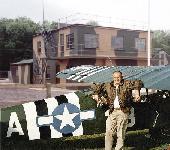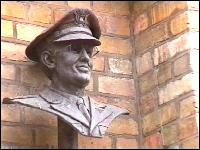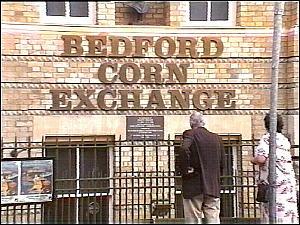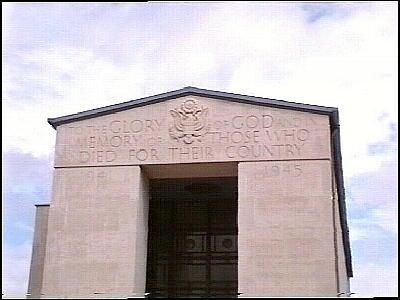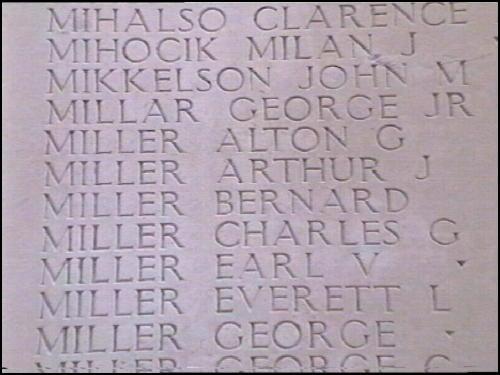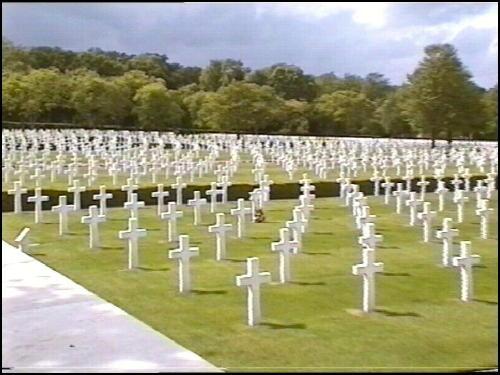| This is Chris Nash's
commentary:
During the 1930's the British dance
band was musically supreme in England. Names like Ambose, Roy Fox (himself
an American) Lew Stone, Henry Hall and Ray Noble, also with vocalists including
Sam Browne, Al Bowlly and Dan Donovan ruled the airwaves, and recording
studios.
The music was popular and easy to listen
to, jazz was frowned on by the BBC, however musicians such as saxophonist,
Freddie Gardner, and trombonist George Chisholm could delightedly give
vent to their musical frustrations on record.
In 1934 Ray Noble departed for America
taking with him Al Bowlly and drummer Bill Harty to take up an appointment
as leader of New York's Rainbow Room Orchestra. At first the Unions were
not happy at a 'Limey' taking over the top spot, however they relented
when Noble agreed that all the musicians would be American, and chosen
by a young trombonist called Glenn Miller!
Back in England things trundled on with
the BBC stuffily controlling the type of music they thought the population
ought to hear, and to be honest some of the recorded arrangements were
very good indeed.
Then came September 3rd
1939
The thirties were over and war was with
us, and both these events combined to create the demise of the dance band.
In 1940 a bomb killed bandleader "Snakehips"
Johnson, and in April 1941 Al Bowlly was killed also. The singing heart
had been taken from the London's musical scene.
Then conscription took over, and the
bandleaders saw their bands decimated, as their musicians were absorbed
into the Services. They struggled on but the excitement and innovation
was gone. Life in Britain slowly degenerated into a miserable existence
of shortages, rationing and military setbacks. It was a cheerless time
for the average Briton even though morale remained doggedly high. By the
Autumn of 1941 Britain had experienced two bitter years of war and life
was pretty colourless.
Then on 7th December 1941 the Japanese
attacked Pearl Harbour. Suddenly everything had changed. The 'Sleeping
Giant' had been roused! The first contingent of GI's landed in Britain
in January 1942, less than two months after the US had entered the war.
By the middle of that year US troops were pouring into Britain and continued
to do so, building up to a peak of over one and a half million. They missed
America and all things American; they listened to the BBC radio, but it
was not to their taste. To be true the musical output was not to a lot
of Britain's taste either, however Reith Ruled (John Reith BBC director-general
during the 40's) and we had to get what the authorities thought was good
for us. Not so the Yank! The fact that music could raise morale had not
been lost on the brass, and Eisenhower himself determined that the GI's
should have the music from home.
Enter the American Forces
Network
A.F.N. began broadcasting on 4th July
1943, and it did not take long for the Brits. to find the wavelength and
eschew the BBC for the delights of jazz and swing.
Meanwhile the USAAF had been settling
into airfields all over East Anglia, so much that the area became known
as 'Little America'. In spite of the obvious cultural differences the Yanks
began to mix happily with the locals, and it was not long before village
damsels were invited to airbase dances, with music supplied by the base
band. Local people also began to experience the delights of the PX, and
the natural wariness of the East Anglian was inexorably worn-away by the
natural friendliness and generosity of the Yank airmen.
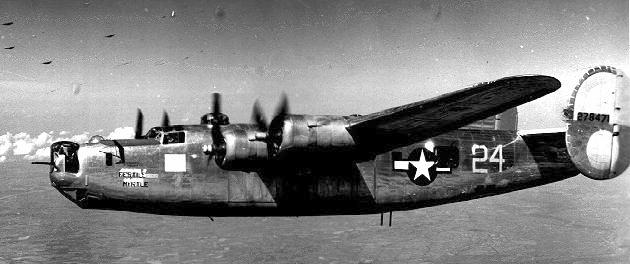
B24
When it hit the locals, that every time
a B24 did not return, it meant the loss of ten young Americans, some of
whom they may well have been dancing with the weekend before, respect took
the place of suspicion. It soon became a regular sight to see a large proportion
of the local population lining the perimeter fence to wave the Liberators
and Fortresses off, and also be there to count back 'their' bombers.

SallyB1 B17
The village of Thorpe Abbotts was desolated
when only one of the 100th. Bomb Group B17's returned from a raid. The
war went on and the Americans were being taken into the hearts of the East
Anglians.
Then on June 22nd, 1944 the mighty A.A.F.
Band left New York on the Queen Elizabeth to join Glenn Miller, who had
already left for England. Eventually the band settled in its HQ at Bedford,
which gave it easy access to all the bases in 'Little America'.
In the next five and a half months and
seventy-one concerts the AAF and Glenn Miller created, an attachment to
the English that can only be described as a phenomenon that shows no sign
of waning fifty-eight years later. The American's brought colour, fun,
goodies that were unobtainable, friendliness and a boundless generosity
into our dull and staid lives, the whole epitomised by their music, and
Glenn Miller made that music.
Glenn Miller AAF Orchestra
on a base in England 1944
For the few lucky ones who could get
to a live concert on bases there were thousands of Brits avidly tuning
into the AFN to hear Shaw, Miller, Goodman, Sinatra, Forrest, Shore etc.
The Brits came to associate the Big Band sound with the American forces
they had come to admire and respect. And the big bands were dominated by
the marvellous AAF, which seemed to be everywhere and on every base at
once. They would perform a concert in Bedford and then fly off in a B24
to Hardwick in Norfolk, home of the 93rd Bomb Group and while playing there
the C.O. of Halesworth in Suffolk would arrange for another B24 to be ready
to fly them in there for yet another session. At all of these concerts
the locals would be panting to get an earful of their favourite music.
The day of the English dance band was over. Yankee swing was King and the
Brits. loved it.
Then December the 15th.1944
Music loving Brits and Yanks alike were
stunned at the news filtering through that Miller was lost over the channel.
The AAF returned to the States in August 1945 and for us in the UK an era
was over. The US govt; wanted their boy's home fast, so with typical US
efficiency the airfields were emptied of their life force, and were soon
abandoned leaving a large gap in the lives of the East Anglians.
All the buzz and glamour of the Yanks
was gone but their music remained through the services of AFN and records.
It was now that the realisation dawned of just how much we owed those gutsy,
lively young Americans, and the only connection most of us had with them,
was the remaining music. Absence makes the heart grow fonder they say and
as time went on our respect for the American Airman grew.
Old Control Towers were restored, memorials
to the Bomb Groups and individuals crews created. The debt we owed began
to sink in. Above all the one thing always associated with the Yanks was
Millers music. The strains of 'Moonlight Serenade' could always be relied
upon to conjure up a vision of a Fort. or Lib. struggling back with "two
turnin' and 'two burnin'. The enjoyment of the music always tempered with
an underlying sadness for the 50,000 young men lost to America and ourselves
in the Air Corps alone.
So, with the music being so popular
people began to think, "Why not emulate the Miller sound with bands
of our own?" after all we have the talent and what a way to remember
the GI's?
Syd Lawrence was the catalyst. His massively
successful orchestra emulated Miller to such a degree that it became hard
for the ordinary guy to tell the difference and the people loved it. More
tribute bands followed, many of them playing in the uniform of the USAAF
to honour the USAAF as much as for authenticity.
As I write, the respect for the wartime
American airmen shows no signs of abating. New memorials appear with great
frequency and with each dedication a Miller tune will be played. At the
public bandstand in Norwich is a plaque to the effect that "Glenn
Miller played here" His name is inscribed on the wall of Remembrance
at the Cambridge American Military cemetery. The Corn Exchange in Bedford
has as inscribed plaque on the wall beneath a bust of the great man and
so it goes on.
Glenn Miller's music will be forever
associated with the sacrifices made by America's youth in England and we
will not forget, and we will ensure that the Music and memories live on.
--- Chris Nash
|
